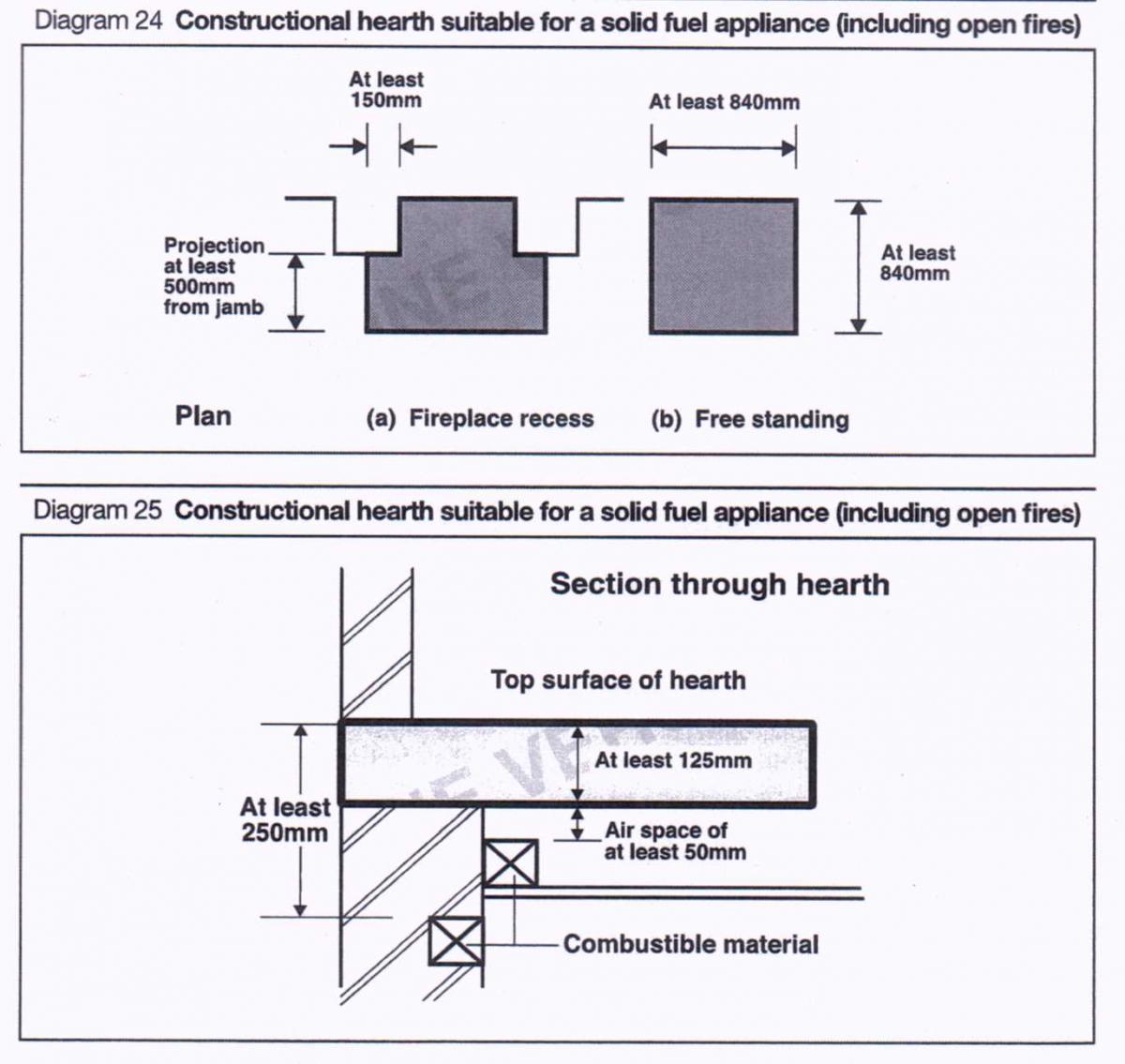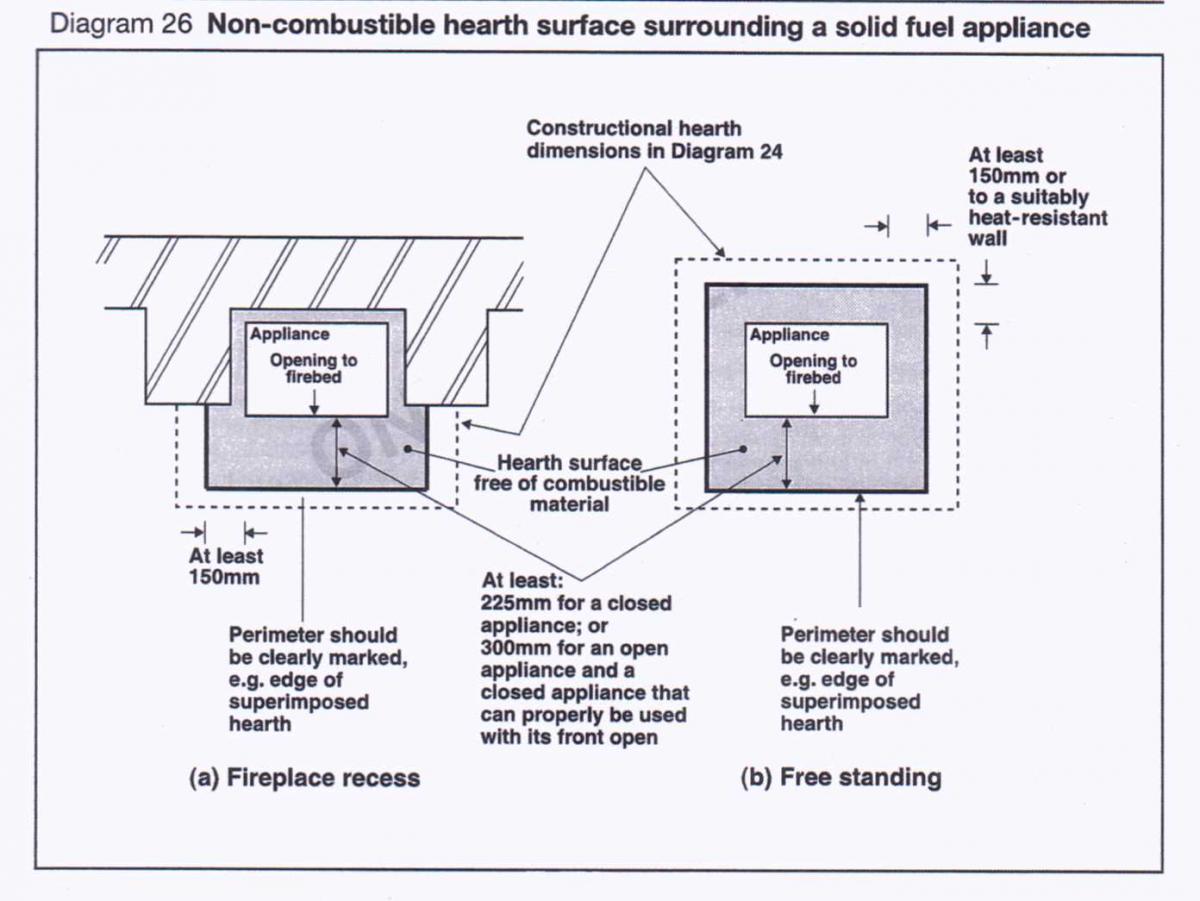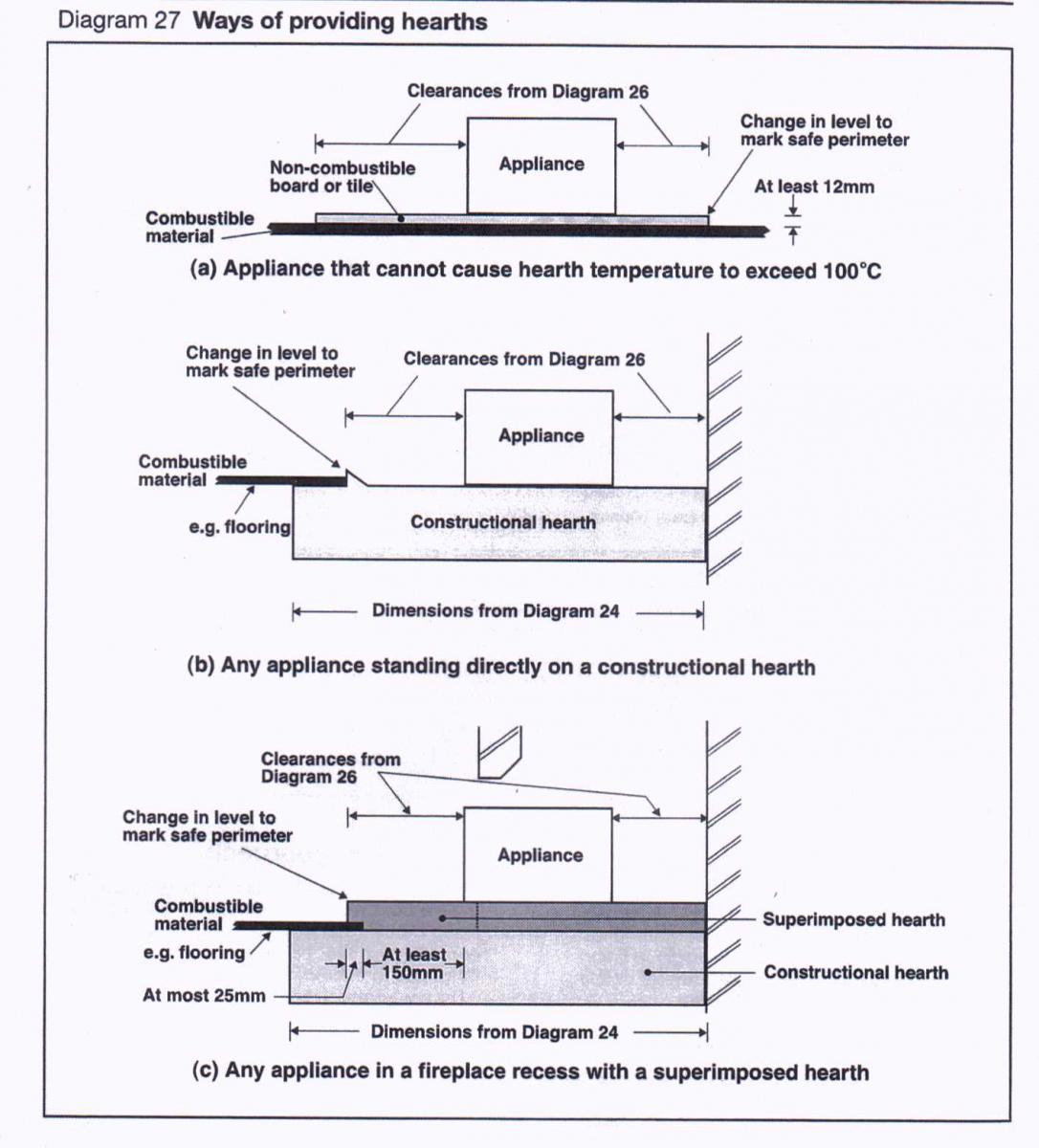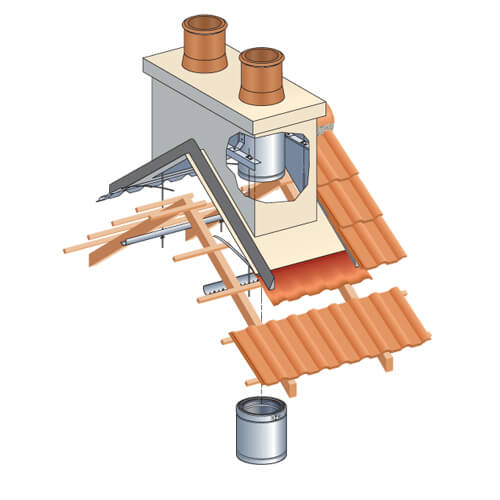We hold large stock of >450 Stoves & >1000's of Meters of Flue and can offer in most instances; Next Day Pallet Delivery or "in house" South East Delivery where possible.
Current Discount / Coupons;
Free Delivery on all EcoSmart Bio Ethanol Fires use code; EcoSmart FOC Delivery
Free Delivery on orders of >£100.00 use code; +100 - (Not applicable with Flue or other Existing Offers and Discounted Items)
Please contact us for any queries or questions.

FAQs
FAQs
Before you visit our showroom if possible;
Download and print and fill in our Pre Showroom Document.
- Take pictures on your tablet, phone or Camera take some images of your fireplace, the chimney top outside and an image showing the complete chimney stack the ground to the chimney pot
- Measure your fireplace opening height, depth and width.
- Measure your room size height, depth and width.
With Kw output of an appliance there are certain things we need to bear in mind such as convection around the appliance and how air sealed the property is and other factors.
With every appliance you require, by building regulations a certain amount of space around the appliance to stop over firing the appliance and damage occurring. Please have this in mind, you cannot always fit the largest appliance possible in your small fireplace! But we will endvour to advise you of the largest suitable one you can install depending on room size and use.
With many appliances there is the availability of a finish there are two main types of finish used;
Powder Coating;
This is generally a Matt finish; The paint is purchased as a powder, hence the name. It is temporarily stuck to the metal with an electrostatic attraction. Then baked on at a very high temperature. (In the same way as you rub a balloon on your jumper and watch it stick to a wall, the granules of powder stick to the work piece)
The powder coat is a surface that any marks, spillages will potentially mark the appliance and be difficult to be wiped off once spilled.
But any marks to the powder coat are very easy to mask and hide as a can of matching spray is not very expensive and can be sprayed on the appliance and all marks, spillages will no longer be visible in most cases.
Enamelling;
Stove enamelling is a method of curing paint to a substrate- in the past these were oil based paints but are now more likely to be acrylic based. The baking of the enamel allows thick coats to be applied yet leave an aesthetically pleasing finish which is highly durable to wear and heat. It is sprayed with the sort of spray guns you would expect to see spraying a car in a garage.
The enamel is a wipe clean surface and most substances can all be wiped off once spilled which makes enamel a desirable finish.
But any chips to the enamel are very hard to mask and hide once chipped short of re-enamelling the appliance which would be very expensive. Similar to an old Aga or Rayburn once chipped the marks are very visible.
So the choice is yours the enamel is wipe clean but when damaged un-repairable where as the powder coat is more susceptible to marking but easy to cover and repair.
All stoves will come as a Black as standard that isn’t to say you cannot have a coloured stove to match your AGA or decor. Many models have the options of colours. Please contact us for more details.
With every appliance there will be a requirement for a hearth there are two options either “Constructional Hearth” this is when an appliance burns over 100 degrees on the bottom.
A constructional hearth will need to be a minimum of 250mm thick and 150mm either side of the appliance and a total has to exceed 840mm square if freestanding and 500mm out from the Jamb of the fireplace and 300mm in front of the appliance. There are alternatives, contact us for more information.



The second option is when the appliance burns under 100 degrees on the bottom then a superimposed hearth is required of >12mm.
A superimposed hearth could be any non-combustible material such as Glass on top of a wooden floor or a tiles and stone. As long as it is secure and >12mm.
The Size of the hearth will depend on the appliance and what is around the appliance. 50mm is nominal requirement behind the appliance to a non combustible wall and 225mm in front of the appliance although sometimes this can be 300mm and 150mm either side as a guide depending on the appliance. There are alternatives, contact us for more information.
No, some gas fires are flueless, and we can install a Pre Fabricated Steel flue if there is no chimney currently for solid fuel.
Wood
A wood burning stove, burns only wood, on flat base and flat surface best on a bed of ash. Wood burns/idles slowly successfully in a woodburning stove rather than a multifuel stove burning wood.
Multi Fuel
A multifuel stove has a multi options of fuel used. Wood, Types of Coal or a mixture of both. A multifuel stove has a grate and riddling system on which the fuel burns on top of which allows air to come from below this grate. This is controlled by a your controls on the stove. An ash pan then is beneath this and the ash as the fuel burns falls into the pan, so that it can be removed as to not block the air ways. Burning soley wood on this grate and riddling system tends to decrease efficiency and make it difficult to idle the stove. Burning coal is very good on a multifuel appliance as coal needs air from beneath.
So Wood or Multi Fuel I hear you scream! Well it all depends on what you want from your appliance and what fuel is available to you. If you have acres of woods which you are felling or have fallen trees and don’t intend on burning your appliance over night for sustained periods of time then a wood burner is suitable for you. If you wish to be able to burn the appliance for sustained periods of time and over night and have a source of coal then I would advise a multi fuel appliance.
Do not painc! Many appliance have the opportunity to retro fit a multi fuel or wood kit on the appliance at a later date please contact us for more information.
If you require a Defra and Smoke Exempt appliance due to where you live as per the The Clean Air Act of 1956 and 1968 if you are unsure please follow this link to find out more.
We supply many DEFRA approved appliances to meet your requirements. See a list of “Defra Approved Appliances” (Defra Approved Appliances on website.)
Many appliances have an optional DEFRA kit as an extra and some come as standard which enables appliances to be installed in smokeless zones.
Gone are the days of pre fabricated flues being large un-slightly flue systems running up houses or out of roofs.
A standard flue is only 7” – 8” Outside Diameter and this can be any colour for little extra costing. Black, White or Purple if you fancy.
There is also the option of a false chimney stack as per images below.

Chimney sweeping might seem like a bygone practice, but it's an essential part of home maintenance, especially in the UK, where many homes still use traditional fireplaces and wood-burning stoves. Regular sweeping ensures safety, efficiency, and comfort during the colder months. Our Sister Company Milborrow Chimney Sweeps can assist with all your maintenance requirements around the South East and can be contacted on: 01342 717900
Why is Chimney Sweeping Important?
- Preventing Chimney Fires: One of the primary reasons for chimney sweeping is to remove creosote buildup, a flammable substance that accumulates with use of your appliance. Neglecting this can lead to dangerous chimney fires.
- Improved Air Quality: A clean chimney allows for better ventilation, reducing the risk of harmful gases like carbon monoxide entering your home.
- Enhanced Efficiency: Regular maintenance ensures that your chimney functions effectively, allowing smoke to escape properly and improving the efficiency of your fireplace or stove.
- Identifying Issues Early: A professional sweep can spot potential problems, such as blockages or structural damage, before they become serious and costly.
The Chimney Sweeping Process
- Inspection: The sweep starts with a thorough visual inspection of your chimney and appliance and fireplace to identify any issues that need attention.
- Cleaning: Using specialised tools, the chimney sweep removes soot and creosote from the flue. They may also clean the smoke chamber and firebox.
- Final Inspection: After cleaning, the sweep performs a final check to ensure everything is clear and functioning properly.
- Advice and Recommendations: Many sweeps provide advice on how often you should have your chimney cleaned and tips for safe burning practices.
Tips for Homeowners
- Schedule Regular Sweeping: Ideally, have your chimney swept at least once a year, especially before the heating season begins. Avoid September to December where you can due to the winter season (Silly Season!) being very busy.
- Keep it Clear: Make sure the area around your chimney is free from debris and overhanging branches.
- Use Seasoned Wood: Burning seasoned (dried) wood reduces creosote buildup and improves efficiency.
- Monitor Your Usage: If you use your fireplace frequently, consider more frequent cleanings.
Conclusion
Chimney sweeping is a vital service for anyone with a fireplace or wood/solid/pellet fuel-burning applaince in the UK. By investing in regular sweeps, you ensure a safer and more efficient heating experience.
Don’t wait until it’s too late—schedule your chimney sweep today!
